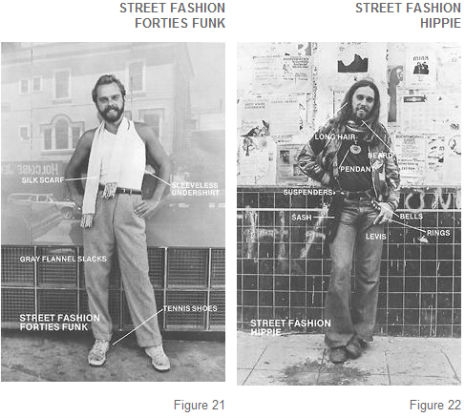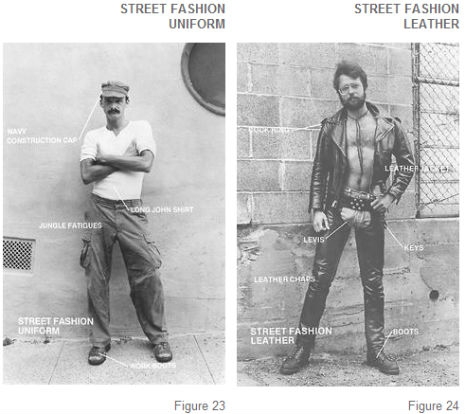
Post-Stonewall. Pre-AIDS. Thus is defined a period, which we can for convenience also term “the 1970s,” that has special significance for homosexuals in the United States. The genie of liberation, especially sexual liberation, had been loosed from its magic lamp, but the devastating toll of plague had not yet made its mark. Under those circumstances, while still enjoying or enduring marginalization in society, homosexual males could engage in behavior that was at once highly promiscuous and yet highly coded. The task of melding one’s own interest in, say, cowboys or sports and more generic signifiers of homosexuality created the possibility of a developed taxonomy of gay life. That is, you could be “gay” but of the butch/leather/jock/urbane type, and so on. During this time, it’s safe to say that many homosexuals became highly attuned to such signifiers.
Into this situation wandered a photographer named Hal Fischer, who published a monograph in 1977 with the provocative title Gay Semiotics based on pictures taken in San Francisco, especially Castro Street and Haight Ashbury. In it Fischer presented straightforward photographs of aspects of homosexual garb, etc., complete with explanatory labels, quite like a museum exhibit.
I can’t remember ever seeing this exact tone before, so deadpan and dry that the material is effectively turned inside out. Taxonomizing people isn’t necessarily the nicest impulse in the world—think of racist representations of African-Americans in the 19th century or Nazi depictions of Jews in the 20th…. Less harmfully, think of countless spreads in MAD Magazine that are funny and harmless but still not necessarily so nice. Nobody likes to be defined to that extent, one can almost hear the pushback…. “Hey, I’m gay and I don’t care about red handkerchiefs!” or whatnot. However, at this point in the development of gay culture, it seems that the trinkets had taken on iconic value within the culture and this winking look at it was most likely seen as funny and not malign.
We’ve supplied some of the more amusing pictures and captions here, but you can see the entire (I believe) book at the Queer Cultural Center. The book is hard to find and currently sells for $500.

BLUE HANDKERCHIEF
Handkerchiefs signify behavioral tendencies through both color and placement. A blue handkerchief placed in the right hip pocket serves notice that the wearer desires to play the passive role during sexual intercourse. Conversely, a blue handkerchief placed in the left hip pocket indicates that the wearer will assume the active or traditional male role during sexual contact. The blue handkerchief is commonly used in the treatment of nasal congestion and in some cases holds no meaning in regard to sexual preferences.
RED HANDKERCHIEF
Red handkerchiefs are used as signifiers for behavior that is often regarded as deviant or abnormal. A red handkerchief located in the right hip pocket implies that the wearer takes the passive role in anal/hand insertion. A red handkerchief placed in the left hip pocket suggests that the wearer plays the active role in anal/hand insertion. Red handkerchiefs are also employed in the treatment of nasal discharge and in some cases may have no significance in regard to sexual contact.
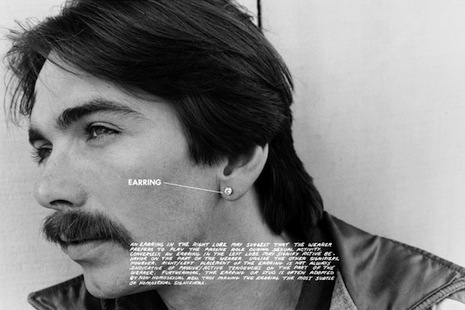
EARRING
An earring in the right lobe may suggest that the wearer prefers to play the passive role during sexual activity. Conversely, an earring in the left lobe may signify active behavior on the part of the wearer. Unlike the other signifiers, however, Right/Left placement of the earring is not always indicative of Passive/Active tendencies on the part of the wearer. Furthermore, the earring or stud is often adopted by non-homosexual men, thus making the earring the most subtle of homosexual signifiers.
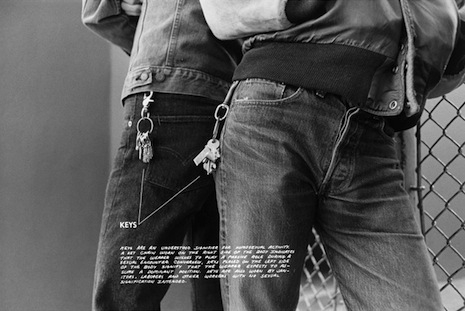
KEYS
Keys are an understood signifier for homosexual activity. A key chain worn on the right side of the body indicates that the wearer desires to play a passive role during a sexual encounter. Conversely, keys placed on the left side of the body signify that the wearer expects to assume a dominant position. Keys are also worn by janitors, laborers and other workers with no sexual significance intended.
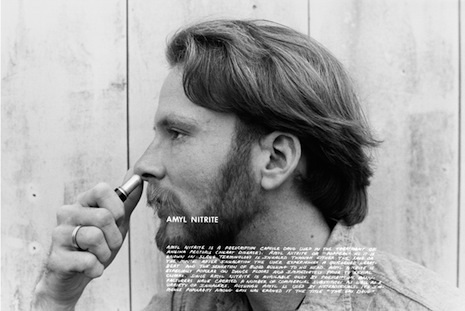
AMYL NITRITE
Amyl nitrite is a prescription capsule drug used in the treatment of angina pectoris (heart disease). Amyl nitrite, or “poppers” as it is known in slang terminology, is inhaled through either the nose or the mouth. After inhalation the user experiences a quickened heartbeat and the sensation of blood rushing to his head. Amyl nitrite is especially popular on dance floors and immediately prior to sexual climax. Since Amyl Nitrite is available only by prescription, manufacturers have created a number of commercial substitutes as well as a variety of inhalers. Although Amyl is used by heterosexuals, its immense popularity among gays has earned it the title “The Gay Drug.”
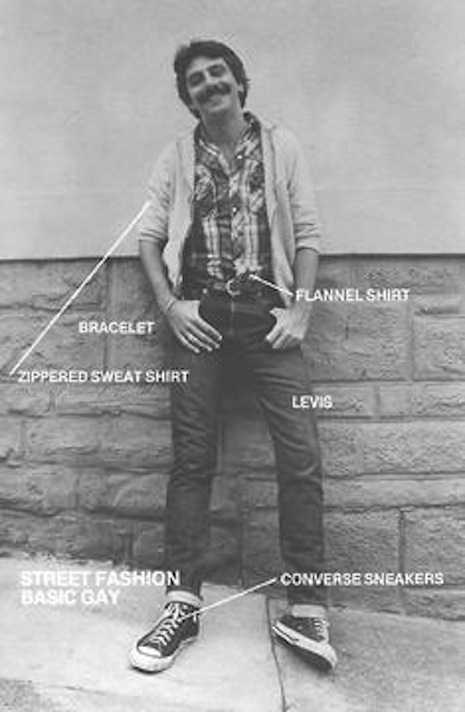
STREET FASHION
BASIC GAY

STREET FASHION
JOCK

ARCHETYPAL MEDIA IMAGE
WESTERN
The western or cowboy prototype is identified by articles of clothing: cowboy or western boots, jeans, flannel or western style shirts and in some instances hats. When the image appears in gay magazines the settings are usually barns, corrals or fence posts. The cowboy represents the frontier and a male-only society. The machismo qualities of the western archetype are vigorously exploited by advertising. Modern cowboys are used by the media to play up masculinity and sexuality in ways that are subconsciously understood by the gay populace.
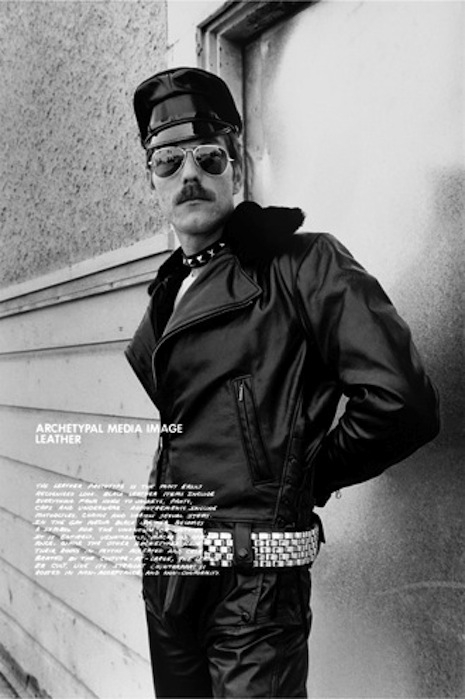
ARCHETYPAL MEDIA IMAGE
LEATHER
The leather prototype is the most easily recognized look. Black leather items include everything from hoods to jackets, pants, caps and underwear. Accoutrements include motorcycles, chains and various sexual items. In the gay media black leather becomes a symbol for the unknown or untried. It is entirely, vehemently, macho in appearance. While the other archetypes have their roots in myths accepted and celebrated by the culture-at-large, the leather cult, like its straight counterpart is rooted in non-acceptance and non-conformity.
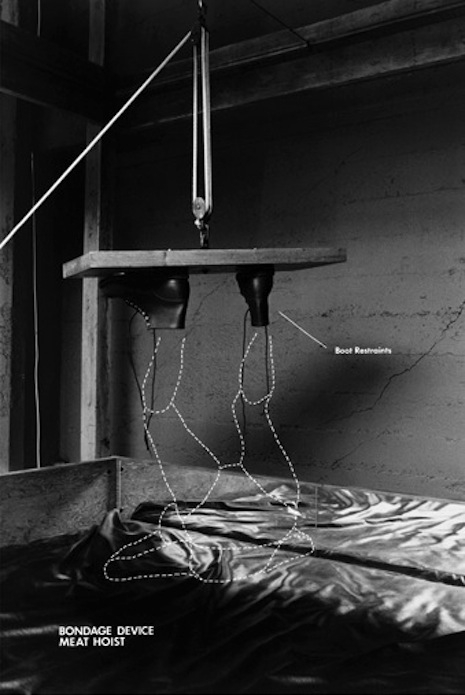
BONDAGE DEVICE
MEAT HOIST

Cover
via Tombolare







